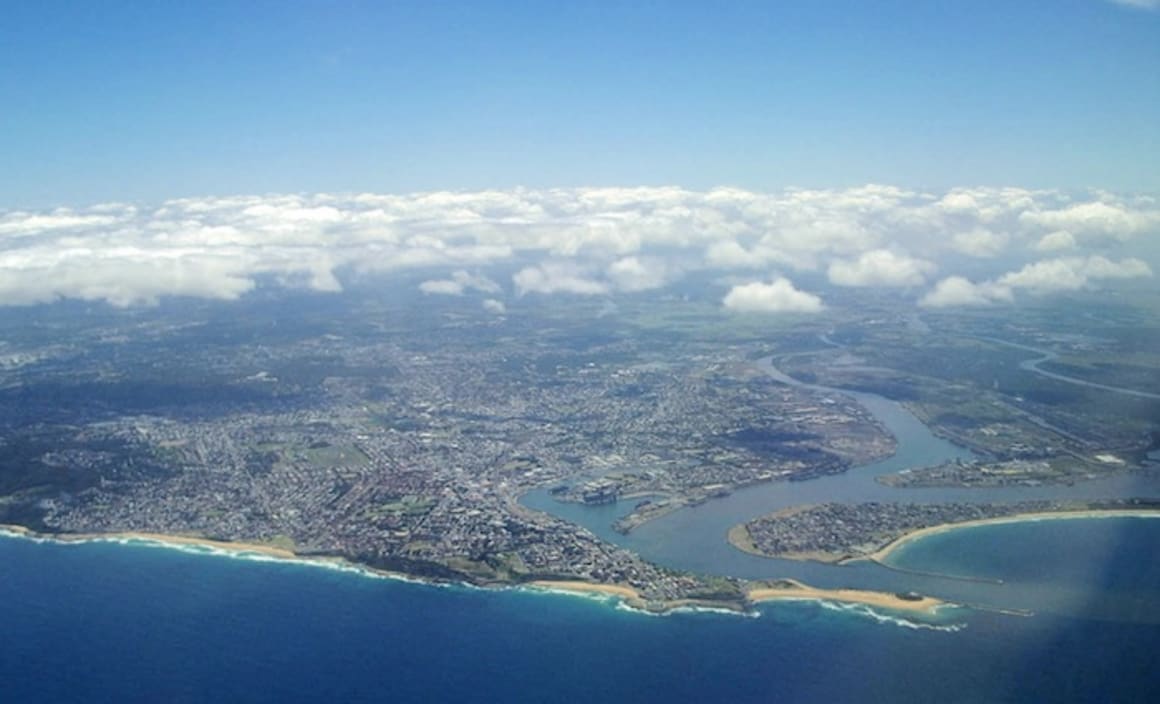It's time to focus on regional city property markets: Hotspotting's Terry Ryder

EXPERT OBSERVER
While mainstream media obsesses over the inevitable downturn in the major markets in Sydney and Melbourne, somehow turning that into a national crisis, the rest of the nation is overlooked, especially regional Australia.
This is a shame for property investors because, right now, many of the best opportunities to buy well for future growth and good rental returns are in regional Australia.
While media’s focus remains firmly on the capital cities, the reality is that the strongest price growth in the past year has been recorded in regional centres.
The best-performing markets this year, based on our analysis of all the research, have been Geelong in Victoria, the towns of Cardinia Shire just outside Melbourne, the NSW Central Coast and the Newcastle region (pictured above).
It’s significant that while the average price outcome for the capital cities is a negative figure, dragged down by Sydney’s decline, the result for regional Australia is positive. This is according to latest data from CoreLogic, which says that the average total return for regional Australia is 6.2%, compared to -0.6% for the combined capital cities.
While four of the eight capital cities have price levels lower than a year ago (according to CoreLogic - other sources disagree), five of the six major state regional markets have prices higher than 12 months ago.
The latest figures from SQM Research have annual price for the capital cities (the average for the eight capitals) slightly in the negative, but the national average including the regions is solidly in the positive.
Returns are better in the regions: yields in the capital cities average 3.5%, while the regions average 5% (CoreLogic figures).
And, of course, the prices are much more affordable: the median dwelling price for the cities is $643,000, compared to $368,000 in the regional areas.
Looking forward, the markets I see as having the best potential for upside for investors include locations like Ballarat and Bendigo in Victoria, the Hunter Region of NSW and the Sunshine Coast in Queensland, with recovering Townsville another market likely to provide great value and potential for future growth.
I note that the latest McGrath Report puts forward the view that regional property markets are the “new black’’ in residential real estate.
The report says leading regional hubs like the Sunshine Coast, Gold Coast, Geelong and Newcastle are undergoing significant price growth on the back of strong demand.
It suggests improved infrastructure has made commuting times faster between regional areas and capital cities - and when coupled with the NBN rollout making access to technology better, these regions have become even more appealing to buyers.
“Massive infrastructure investment across Australia is also boosting employment in regional centres,’’ the report says.
Most investors overlook the regions, believing that all the economic and property growth potential lies in the capital cities. It simply isn’t so.
To increase awareness of the potential in our regional areas, consider what Jack Archer, chief executive of the Regional Australia Institute, said in a recent newspaper column:
“Many believe one of the problems with plans to decentralise our population is too few jobs in rural and regional Australia. Not true. Permanent skilled and unskilled migrants are needed in many areas.
“And simple reforms to immigration policy with support from rural communities to settle new permanent migrants will help take pressure off major cities.”
He notes Federal Government moves to channel jobseekers into regional work and the possibility of a five-year regional visa to connect migrants with permanent regional jobs.
Data from the Federal Government’s Internet Vacancy Index shows why new permanent migration to regions is critical. In July there were 46,000 job vacancies in regional Australia. This is up 23% from February 2016. Capital city vacancies rose only 12%.
Archer says: “This need is not about temporary farm work. Today’s vacancies are a mix of high-skill and low-skill jobs — everything from labouring, to sales, trades and professions. In the Pilbara, there are about 1,600 vacancies including 553 trades (automotive), 332 professionals (engineering and health), 238 machinery operators, 155 labourers and 128 clerical staff.”
Australia has many strong, diverse regional economies supporting property markets which are affordable, have much better yields than the cities and have strong potential for capital growth.
That’s why I see buying in good regional cities as a win-win-win scenario.
John McGrath recently said regional is the new black, rivalling the likes of Sydney, Brisbane and Melbourne with their new improved lifestyle, population growth and growing economy's.
Terry Ryder is the founder of hotspotting.com.au
twitter.com/hotspotting